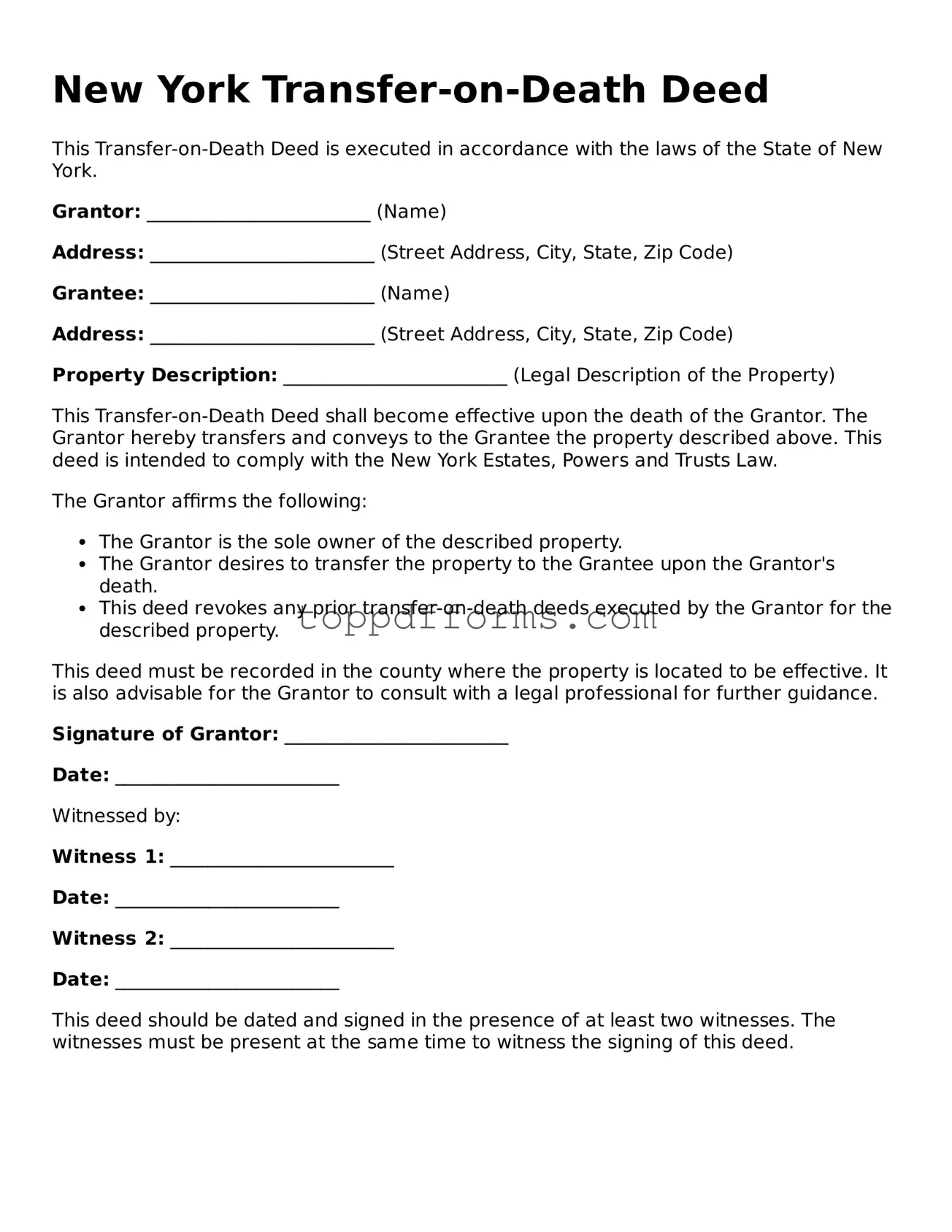What is a Transfer-on-Death Deed in New York?
A Transfer-on-Death Deed (TOD) is a legal document that allows an individual to transfer real estate to a designated beneficiary upon their death. This deed enables property owners to avoid probate, making the transfer process smoother and faster for their heirs. The beneficiary does not have any rights to the property until the owner's death, ensuring the owner retains full control during their lifetime.
Who can create a Transfer-on-Death Deed?
Any individual who owns real estate in New York can create a Transfer-on-Death Deed. This includes homeowners and property owners of any age. However, it’s important to ensure that the property is solely owned by the individual, as properties held in joint ownership or with other encumbrances may not qualify for this type of deed.
How do I complete a Transfer-on-Death Deed?
To complete a Transfer-on-Death Deed, you will need to provide specific information, including your name, the name of the beneficiary, and a legal description of the property. The form must be signed in front of a notary public. It’s crucial to ensure that all details are accurate and the form is executed properly to avoid any issues in the future.
Do I need to file the Transfer-on-Death Deed with the county?
Yes, once the Transfer-on-Death Deed is completed and notarized, it must be filed with the county clerk's office where the property is located. This filing is essential for the deed to be legally recognized and to ensure that the beneficiary can claim the property after the owner's death.
Can I revoke a Transfer-on-Death Deed?
Yes, you can revoke a Transfer-on-Death Deed at any time during your lifetime. To do this, you must create a new deed that explicitly revokes the previous one or simply execute a revocation document. It’s important to file the revocation with the same county clerk’s office where the original deed was recorded to ensure it is effective.
What happens if I don’t name a beneficiary?
If you do not name a beneficiary in your Transfer-on-Death Deed, the property will not transfer as intended upon your death. Instead, it will be treated as part of your estate and will go through the probate process. This could lead to delays and additional costs for your heirs, so it is advisable to designate a beneficiary to avoid these complications.
Are there any tax implications with a Transfer-on-Death Deed?
Generally, a Transfer-on-Death Deed does not trigger any immediate tax implications for the property owner. However, the beneficiary may be subject to property taxes once the property is transferred. It’s wise to consult with a tax professional to understand any potential tax consequences that may arise from this type of deed.
